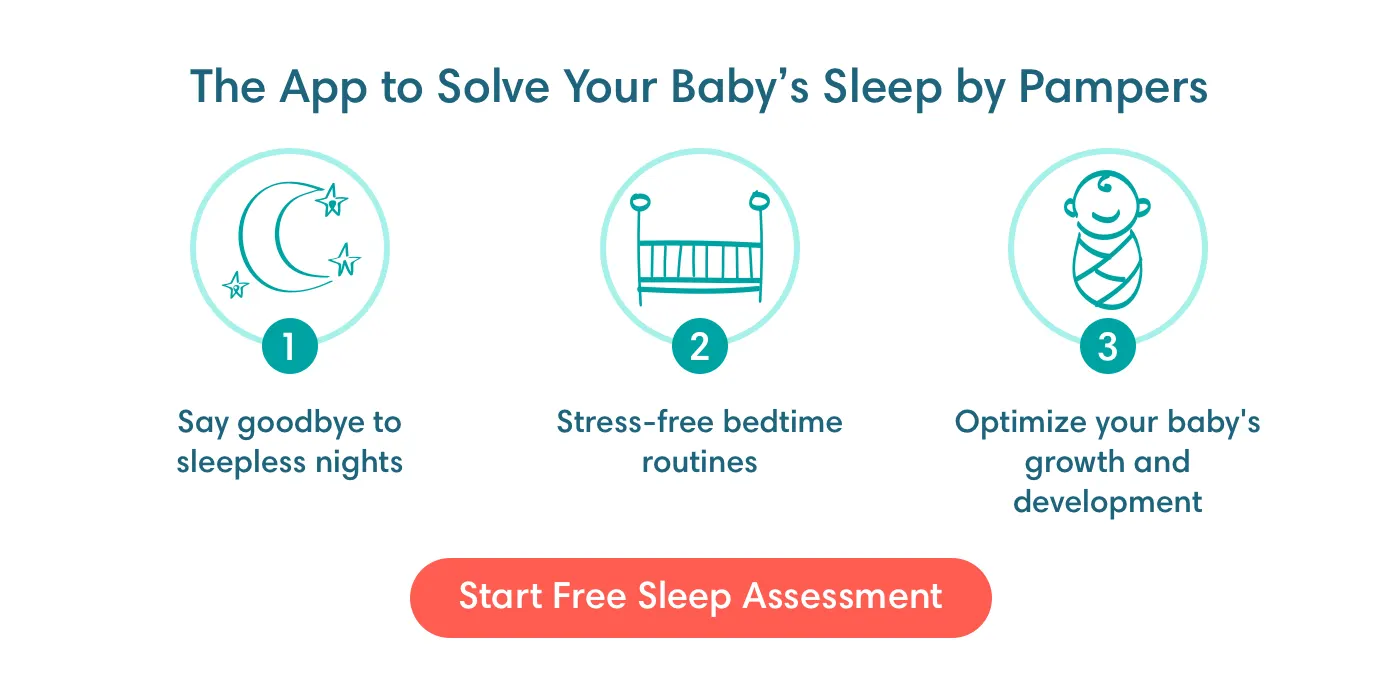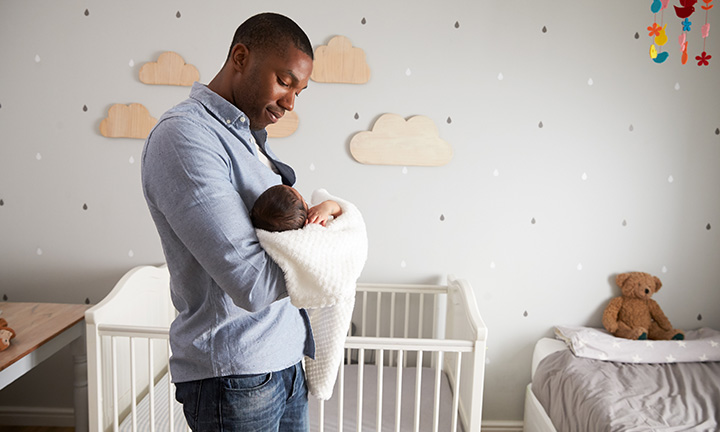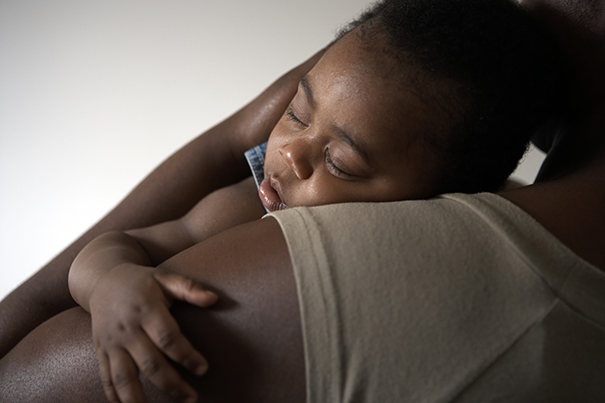
Your Baby’s Nap Time
It’s important for children to get enough sleep, and for the first few years most babies need to supplement their night-time sleep with naps during the day. Read on to learn more about the optimal nap times for babies, why napping is important and how long it lasts. We’ve also got some handy tips for helping your baby or toddler get the daytime sleep they need.
What Are Naps
In the first few months, newborn babies tend to sleep and wake intermittently throughout the day and night in harmony with their feeding patterns. As your baby gets older, the proportion of daytime sleep decreases and your little one starts to sleep mostly at night.
However, one or two daytime naps – short period of sleeping during the day – are often needed for a few years until your child grows out of them. It’s common for this to happen around the age of 3 to 4 years old, although some children may keep on napping until they’re older than this.
The Importance of Nap Time
Sleep is important for all of us, but especially for babies and toddlers. In the first few years, daily naps are needed to ensure that your child gets all the sleep they need every day. Here are some of the ways nap time can be beneficial for your baby or toddler:
The benefits of your baby’s nap time for you
Nap time also gives you and other caregivers a much-needed break. While your baby or toddler naps, take the opportunity to unwind, grab a little ‘me time’ or do something that's hard to do when your child is awake.
The Optimal Times for Naps
Every child is unique, so keeping track of your child’s sleep and watching for signs of tiredness will help you pinpoint specific nap times that work best for your child. Generally speaking, though, the best time for a nap is likely to be mid to late morning and early afternoon.
Signs of tiredness in your baby or toddler can include: At 0-3 months:
At 3-12 months and up:
A nap typically lasts anywhere between 30 minutes and 2.5 hours. Your child may need to nap more often or less often depending on their age and stage of development. If your child is old enough to sleep through the night, it’s a good idea not to have nap time too late in the afternoon, because your little one may not be tired enough when bedtime rolls around. As a rule of thumb, try and time your toddler’s last or single nap of the day so that they’re awake again by the early afternoon. If your baby isn’t tired by bedtime, you may need to play around with an earlier afternoon nap or shortening the duration of the afternoon nap. You may need to drop nap time altogether if your child no longer needs it. Conversely, in some cases missing a nap may result in your child having more trouble falling asleep at night or a night-time waking because your child may be overtired by the time bedtime rolls around.
Does Your Toddler Need One or Two Naps?
After your child turns 1 year old, you may not be sure whether they need one or two naps per day. There’s no standard answer, as individual toddlers may require different amounts of daytime sleep. In fact, the frequency and amount of nap time your 1-year-old or 2-year-old child needs on any given day may even depend on what kind of day they’re having. Sleep patterns change as your child grows and develops. So, at some point, your little one may switch from having two daily nap times to only needing one nap a day. However, when this happens depends on many factors unique to your child. Keeping in mind that children differ greatly in their sleep patterns, here is a rough guide to the number of naps babies and toddlers often have during the day at different ages, and approximately how much daytime sleep they need in total:
When Do Kids Stop Needing Nap Time?
Sleep patterns can differ a lot between kids, and they change at different rates. Many children stop needing a nap sometime between the age of 3 and 4 years old It might be time to lose a nap during the day if your child no longer falls asleep at nap time or can’t get to sleep at bedtime because they still have plenty of energy left..
Keep in mind that some children may stop napping earlier or later than this, so if your little one still has a snooze in the daytime it’s not usually any cause for concern. However, if you think your little one is tired in the day because they aren’t getting enough sleep at night, consider trying some of these sleep training methods at bedtime and/or ask your health visitor or doctor for personalised advice.
Tips for Creating a Nap Time Routine
You might like to establish a nap time routine to get your child in the mood for a daytime nap, similar to the bedtime routine you have at the end of the day. Keep in mind that for nap time you don’t need to launch into the full bedtime routine. One or two activities that you regularly perform with your little one in the run-up to nap time could be enough to help your child wind down and signal that it’s time for a short rest. The key to a nap time routine is keeping things calm and soothing, especially in the moments before you put your little one down for a nap. Here are some things you could try to get your baby or toddler in the mood for a nap:
Creating a consistent naptime routine is essential for your baby's healthy sleep habits and overall development. So, even if someone else looks after your little one sometimes, such as a grandparent or babysitter, make sure they follow the established nap time routine.
To enhance this process and ensure a restful nap experience, consider incorporating the Smart Sleep Coach by Pampers into your daily routine. This app offers personalised sleep guidance, helping you better understand your baby's sleep patterns and needs during the day. With the Smart Sleep Coach, you can establish a structured naptime schedule, address sleep issues, and implement safe sleep practices for your little one.
Creating an Ideal Nap Time Environment
The best place for daytime naps is the same place your baby sleeps at night, whether that’s in a cot, Moses basket or – when your child is a little older – in his or her own bed.
However, it can be helpful to have slightly different setup for sleeping during the day, so your baby knows it’s still daytime and not the same as ‘proper’ bedtime.
Here are some tips for creating an ideal sleep environment for naptime:
FAQS AT A GLANCE
Every child is unique, and there’s a lot of variation in the number of naps and hours of daytime sleep that babies need.
With that in mind, here’s an example of how an average nap time schedule might look at different ages:
- 0-3 months: 4 naps/8 hours
- 6-12 months: 2 naps/3.5 hours
- 12-18 months: 1-2 naps/2 hours
- 18 months – 3 years: 1-2 naps/1.5 hours
- 3+ years: 0-1 naps/0-1.5 hours.
The Bottom Line
Nap time is important – it contributes to your child’s health and development and can help improve concentration and mood. Having good, well-timed naps during the day could even help your little one to get better sleep at night.
In the beginning your baby may nap three to four times per day, but by toddler or preschool age your child will start to nap less and less until nap time is completely phased out.
Creating a soothing and safe environment for naps will help your child get the most out of them.
Plus, you might find you look forward to your child’s naps yourself, as they give you opportunities to take on tasks that are hard to do when your child is awake and wants all of your attention.
The information in this article is based on the expert advice found in trusted medical and government sources, such as the National Health Service (NHS).The content on this page should not replace professional medical advice. Always consult medical professionals for full diagnosis and treatment.










